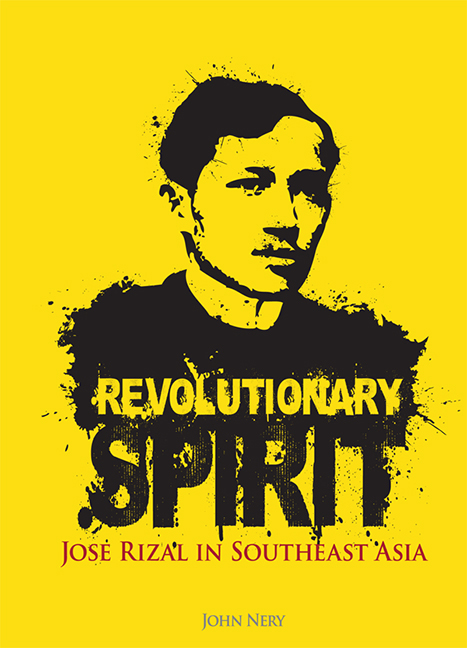Book contents
- Frontmatter
- Dedication
- Epigraph
- Contents
- Foreword
- Message
- Preface
- Acknowledgements
- INTRODUCTION The Uses of Error A Rizal Chronology
- 1 TURNING POINTS
- 2 “THE VERY SOUL OF THIS REBELLION”
- 3 DOCTOR RIZAL
- 4 “HALFBLOED”
- 5 “NO MARX OR LENIN”
- 6 UNDER THE SOUTHERN SUN
- 7 THE HOPE OF MILLIONS IN ASIA
- 8 “HIS NAME IS SWEET IN OUR MEMORY”
- 9 THE MYTH BUSTERS
- 10 “A GREAT HISTORICAL EXPERIMENT”
- Epilogue
- Appendices
- References
- Index
INTRODUCTION The Uses of Error A Rizal Chronology
Published online by Cambridge University Press: 21 October 2015
- Frontmatter
- Dedication
- Epigraph
- Contents
- Foreword
- Message
- Preface
- Acknowledgements
- INTRODUCTION The Uses of Error A Rizal Chronology
- 1 TURNING POINTS
- 2 “THE VERY SOUL OF THIS REBELLION”
- 3 DOCTOR RIZAL
- 4 “HALFBLOED”
- 5 “NO MARX OR LENIN”
- 6 UNDER THE SOUTHERN SUN
- 7 THE HOPE OF MILLIONS IN ASIA
- 8 “HIS NAME IS SWEET IN OUR MEMORY”
- 9 THE MYTH BUSTERS
- 10 “A GREAT HISTORICAL EXPERIMENT”
- Epilogue
- Appendices
- References
- Index
Summary
THE USES OF ERROR
I
It may be best to begin with an instructive error. In “The First Filipino,” an essay in the London Review of Books occasioned by a new translation of Noli Me Tangere, the preeminent scholar Benedict Anderson references Jose Rizal's encounter with the demon of doubleconsciousness (Anderson 1998: 229), “which made it impossible ever after to experience Berlin without at once thinking of Manila, or Manila without thinking of Berlin. Here indeed is the origin of nationalism, which lives by making comparisons.”
And then the error:
It was this spectre that, after some frustrating years writing for La Solidaridad, the organ of the small group of committed “natives” fighting in the metropole for political reform, led him to write Noli Me Tangere, the first of the two great novels for which Rizal will always be remembered. He finished it in Berlin just before midnight on 21 February 1887 — eight months after Gladstone's first Home Rule Bill was defeated, and eight years before Almayer's Folly was published. He was twenty-six.
In fact, the Noli, as it is familiarly, even affectionately known in the Philippines, was published two years before the first number of La Solidaridad (the Soli in current speak, but just plain Sol to Rizal in his time) came off the press. It was primarily because of the Noli, and the fame or notoriety that quickly surrounded its author, that Rizal became the lead attraction of the main fortnightly newspaper of the Propaganda — the campaign in Spain to publicize the need for urgent reform of the Philippine colony. There were others who dared publish their names in full, like the Austrian scholar Ferdinand Blumentritt, or wrote just as well or even better, like the gifted polemicist Marcelo del Pilar — but it was Rizal the daring novelist who attracted the most attention, at least in the two years he wrote for the newspaper.
What explains the error? Anderson may have conflated Rizal's first sojourn in Europe, from 1882 to 1887, with his second, which ran from 1888 to 1891.
- Type
- Chapter
- Information
- Revolutionary SpiritJose Rizal in Southeast Asia, pp. 1 - 45Publisher: ISEAS–Yusof Ishak InstitutePrint publication year: 2011

